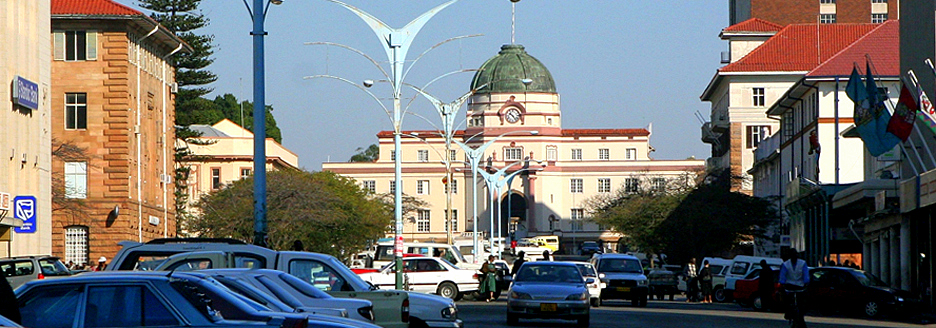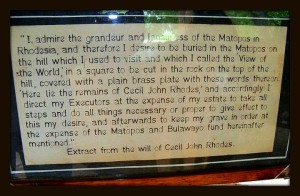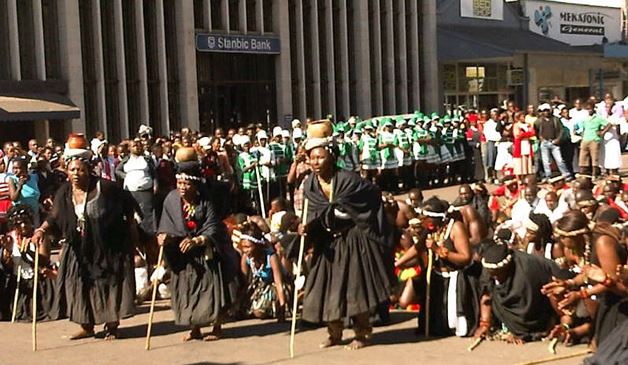Competition among cities to promote tourism-related industries and businesses can lead to development of tourism infrastructure, products and services. The desire to outdo each other is the catalyst needed to force City locales to allocate adequate resources towards development of domestic tourism.

The endangered White and Black Rhinos are proud residents of Matobo National Park, Bulawayo. Picture: two white rhinos in Matobo.
Zimbabwe’s tourism industry has become one of those stories that continue to defy all odds. While major industries buckled under volatile economic conditions of the past decade and a half, the local tourism industry, inspite of minor setbacks, has remained defiant. It remains the busiest tourist hub in the region which continues to attract visitors. This ability to defy odds is a major confidence booster and a rarity which should be exploited to maximum benefit.

Business events like ZITF offer the city an opportunity to develop and grow tourism-related businesses to boost local economy and domestic tourism. Picture: ZITF, Bulawayo
While safaris make up the bulk of the success story that is Zim tourism, it is time that local businesses together with City Fathers look inward within their cities and then start to utilize available opportunities already at their disposal. With the right approach and appropriate support from the relevant Tourism Ministry, it is possible to develop, grow and strengthen domestic tourism and related businesses to boost the otherwise struggling local economies.
Local Tourism: Potential for Growth
Zimbabwe’s local tourism industry has potential to grow and thrive if adequate resources are allocated to support the weak and in other areas, non-existant tourism-related businesses throughout various cities. While enhanced competition is necessary to attract tourists to boost local economies, not all cities are advantaged and strategically positioned like Bulawayo.
Bulawayo, The City of Kings

The City of Bulawayo also known as The City of Kings is a historical city that is also part of UNESCO World Heritage protection site.
Not all Zimbabwean cities are geographically and strategically located within the region that is the epicenter of the country’s tourism industry. Bulawayo might have lost its status as the country’s industrial hub but it still has more to offer in terms of tourism and therefore should not be allowed to die a slow death by its leaders and City Fathers. Zimbabwe’s oldest city boasts of many historical sights, cultural pride, rich heritage and history, pristine wildlife including the endangered black and white rhinos in Matobo National Park. Major business events and festivals like Zimbabwe International Trade Fair (ZITF), Mine-Entra and Intwasa among others are what makes Bulawayo a candidate for further development of tourism-related businesses to boost the flagging local economy.

Bulawayo and surrounding Matobo Hills are of historical significance to both Black and White Zimbabweans. Picture: Extract From Cecil J. Rhodes Will
Not only is the City of Kings a protected historical site in its own right, it is host to major sites and attractions that are of historical relevance and significance to ancient African history, civilization and kingdoms. The revered Matobo Hills are a place of cultural and spiritual significance to the entire region with ancient spiritual pilgrimages to the shrine a revered practice relevant to this day. The City of Kings which boasts of well-preserved Victorian architecture, rare flora and fauna is a historical goldmine for both Black and white Zimbabweans alike.
Major Gateway
Bulawayo is strategically located within proximity to major highways, routes and railways. It is the transit route to and from neighbouring countries like Botswana, South Africa and Zambia where regional tourists emanate and transit from. The city is a major gateway to regional tourist attractions such as Victoria Falls, Hwange National Park and Matobo National Park. While major international flights fly to Johannesburg, South Africa, most Zim-bound travellers either connect to Victoria Falls, Bulawayo or Harare International Airports or choose to drive to Zimbabwe while enjoying the scenic views along the way. Bulawayo is the major transit city that is also closest to local attractions and is within driving distance to Victoria Falls and Harare.
Local Initiative

Bulawayo boasts of cultural pride, rich history and heritage. Picture: Cultural celebration and commemoration of local native and one of the Founding Fathers of modern-day Zimbabwe.
With the right support and initiative, Bulawayo can build on existing structures to improve outdated tourism infrastructure including accommodation, transportation, Food and Beverage sectors and other tourism-related businesses such as conference centres. If the Council, local businesses and Diaspora Community together in conjunction with the Tourism Ministry work together and galvanize adequate resources, dying cities like Bulawayo can be revived and resuscitate the overall ailing industry. Only when Zimbabweans start to show interest in reviving their own economy can external investors loosen their wallets and start to invest in locally-driven tourism initiatives.
Ready to explore? Unleash the wanderlust in you! Explore, experience, discover Zim Tourism!